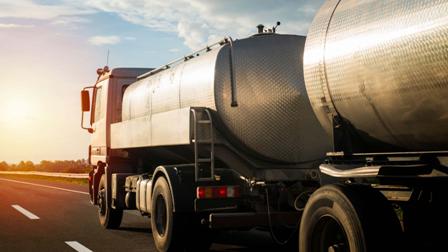EUGENE HERBERT
Fuel costs are estimated to be the second-largest expense in a fleet’s budget. As fuel price soars and remains one of the biggest expenses, fleet managers need to do whatever is necessary to keep these costs as low as possible. Fleet fuel-saving strategies should, therefore, include the following:
Avoid idling: Idling for more than 10 seconds uses more fuel and emits more emissions than switching the vehicle off. Educate drivers on when to switch off and when idling is acceptable.
Get a fuel card: this provides data to keep track of whether fuel spend equals kilometres travelled.
Empty vehicles: require drivers to remove any unnecessary weight from their vehicles weekly. Every 50kg removed from a vehicle, improves fuel efficiency by 1% to 2%.
Correct tyre pressure: It is estimated one out of four drivers travel with underinflated tyres. Underinflation can increase fuel consumption by 10% on long hauls and cause a 15% reduction in tyre life. Have policies to monitor tyre pressure regularly, particularly in cold months.
Cruise control: this can smooth acceleration on highways and flatter terrain. With inclines and curves, however, cruise control will not be as effective as drivers in reducing fuel consumption.
93 vs. 95: higher octane fuels do not always increase fuel efficiency as commonly believed. Instead, know when to use each type of fuel, for example, naturally aspirated vs turbocharged engines and inland vs costal driving.
Reduce speed: reducing speed by 20km/h can help reduce your fuel consumption by as much as 15 – 20%. Online tools can calculate additional fuel spend over certain speeds and give drivers more insight on how speeding affects consumption.
Preventative maintenance: put fleets on regular maintenance schedules to spot issues before they become problems.
Aircon policies: while an aircon can be more fuel-efficient in certain circumstances, unnecessary use can increase consumption by between five and more percent. While it is unrealistic to ban aircon use, there is a need to train drivers on how and when to use it. For example, the optimal temperature is around 22 degrees, park in the shade or use sunshades to keep vehicles cooler and avoid using the aircon while stationary.
Aerodynamics: Conversely, wide-open windows on highways increases aerodynamic drag, resulting in a 10% decrease in the economy. Anything that affects the original aerodynamics of a vehicle must be correctly fixed as soon as possible to reduce drag. Avoid moving cargo on a roof.
Eugene Herbert is the CEO of South African-based MasterDrive
©Copyright MOTORING WORLD INTERNATIONAL.
All rights reserved. Materials, photographs, illustrations and other digital content on this website, may not be reproduced, published, broadcast, rewritten or redistributed in whole or in part without prior written permission from Motoring World International
Contact: editor@motoringworldng.com





